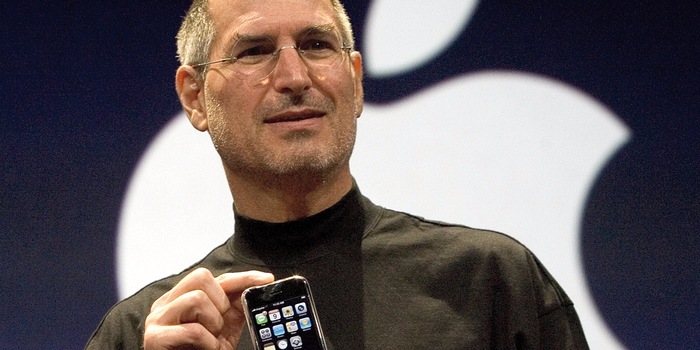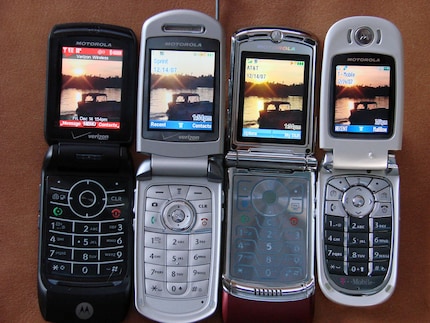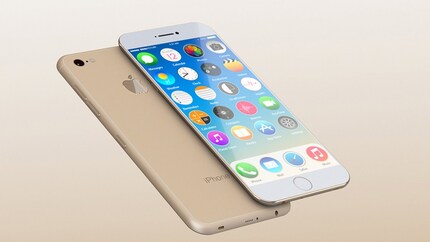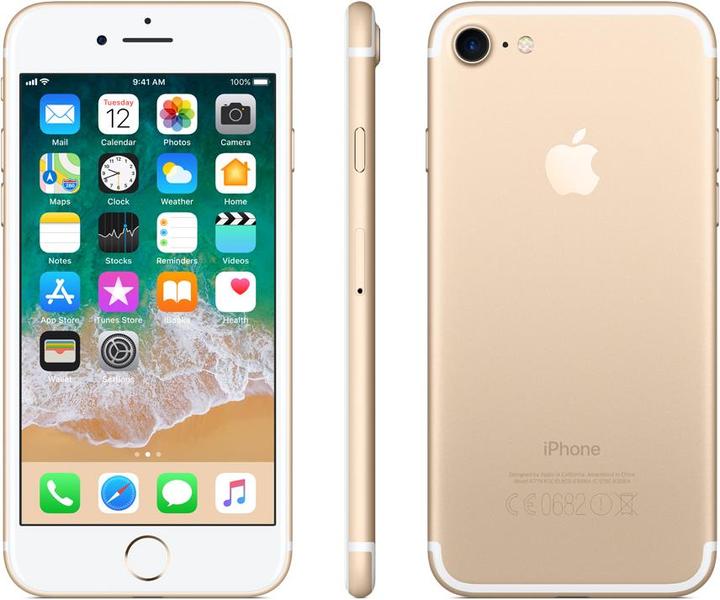

10 years of the iPhone: successes, mishaps and an uncertain future
On 9 January 2007, Apple founder Steve Jobs presented the world with the very first iPhone. It was to have a formative influence on our communication behaviour on the move like no other device. Here are the highs and lows of ten years of the iPhone.
No, Apple didn't invent the smartphone. Apps, multi-touch displays and internet-enabled devices already existed before it. However, it took Steve Jobs' visionary flair to combine everything in one device. One that everyone had to have in one fell swoop.
On 9 January 2007 at the Macworld event in San Francisco, Jobs unveiled the iPhone before the eyes of the world. Compared to today's standards, the small block with its 3.5-inch display and a resolution of 320x450 pixels doesn't look very spectacular. At the time, however, the whole thing was like a revolution, considering that most mobile phones still looked like this:
.

Image: Cellguru
The first iPhone, often referred to as the iPhone 2G due to the GSM wireless standard, was different. It was more playful, more user-friendly and just somehow more exciting. The multi-touch display in particular set it apart from the competition. This benefited apps in particular, which could also be developed by third-party providers. Something that Jobs had not initially envisaged and that was only possible with the successor iPhone 3G. Ultimately, it was this expandability that finally made the iPhone a must-have for many people.
Since then, the small "i" has become the company's trademark. Originally, it should not have been called the iPhone - the naming rights were held by Cisco. However, Apple was able to reach an agreement with Cisco just one month after the iPhone was launched.
Smiled at by the competition
While Apple was celebrating the media's response, the head of its biggest rival company doubted the iPhone's success. Steve Ballmer, Microsoft's CEO at the time, made fun of the fact in an interview that a smartphone that still cost 499 dollars, even with a subsidised mobile contract, was simply too expensive. He also ridiculed the lack of physical buttons. He has since admitted his mistake.
The low blows can't stop the success
The next big hit was the launch of the iPhone 4, which came onto the market in 2010. It gained dubious notoriety due to two events. The first was the complete unveiling by the tech blog Gizmodo. An Apple employee had forgotten his prototype in a bar, whereupon the finder sold the coveted device to the tech blog for 5,000 dollars. What followed was an extensive preview of Apple's new baby. The apple company then threatened legal action and demanded the prototype be handed over. Although Gizmodo complied with the demand, a Californian task force stormed the home of editor Jason Chen on 23 April and confiscated his computers and hard drives. The incident was heavily criticised and the investigation was eventually dropped.

The second event was also unpleasant for Apple. Although the fourth iPhone also sold like hot cakes, many customers complained about reception problems. Although Apple quickly made improvements, the phenomenon went down in history as Antenna Gate or "Death Grip". If you gripped the smartphone tightly with your hand, you could watch the reception performance shrink.
Another disaster occurred in 2012 when Apple replaced Google Maps with its own map service. Basic functions such as navigation sometimes didn't work at all and users suddenly found themselves in completely different places than planned. The slogan "It just works" suddenly had a sour aftertaste. The problem reached such proportions that the new Apple boss Tim Cook felt compelled to make a rare public apology. The Apple manager responsible for Apple Maps was even sacked. The map service is now working reliably, which is due in no small part to Apple's rethink and the introduction of public beta tests.

A second "-gate" occurred in 2014 with the iPhone 6 Plus. Videos circulated on the internet of iPhones bent in a trouser pocket. "Bendgate" was born. Here too, the outcry was greater than the actual problem. However, the incidents have become more frequent since the death of Apple visionary Steve Jobs in 2011.
Continues to lead despite declining market share
Despite these setbacks, the iPhone continues to enjoy unabated popularity. In July 2016, the iPhone broke the one billion brand mark for the first time. The latest model, the iPhone 7, is also enjoying strong sales. In Switzerland, the market share is particularly high, even though Android devices are becoming more popular every year and are said to have overtaken the iPhone in terms of numbers as early as 2014. However, there are also figures that still see the iPhone on the throne in Switzerland.
The success is not only due to the user-friendliness, but also to the captivating design, which still has numerous imitators. The best known is probably Samsung. The result was one of the biggest legal disputes in the tech industry between the two rivals, which ended with Samsung having to pay Apple one billion US dollars.
But even without such court cases, the company is swimming in money. Although its market share is getting smaller and smaller worldwide and in Germany, for example, is quite small at 17 per cent compared to the 80 per cent of Android devices. One of the reasons for this is that Apple is able to sell the iPhone at a significantly higher profit and therefore still accounts for a staggering 91 per cent of all profits in the entire smartphone market.
Is the revolution coming this year?

The company is likely to have something very special planned for the tenth anniversary. And that is necessary, because the competition has long since caught up and overtaken it in many respects. While many have missed something typically Apple "magical" in recent years, the next iPhone could be a real hit again. Perhaps there will also be a new start with the name, as with the iPad, and it will simply be called "The new iPhone". However, the fact that the number eight has a special significance in China and that this market is extremely important for Apple speaks against this. It will be interesting to see whether Apple succeeds in turning the tech world on its head once again.
Who else wants it? Who hasn't yet?
You might also be interested in this
As a child, I wasn't allowed to have any consoles. It was only with the arrival of the family's 486 PC that the magical world of gaming opened up to me. Today, I'm overcompensating accordingly. Only a lack of time and money prevents me from trying out every game there is and decorating my shelf with rare retro consoles.
Interesting facts about products, behind-the-scenes looks at manufacturers and deep-dives on interesting people.
Show all

